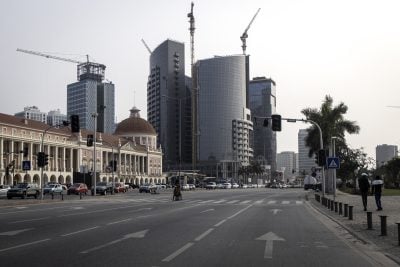Honey has always had a special place in Ethiopian culture for thousands of years. It has been used in a variety of ways, from a form of food to the making of wine and as a medicinal aid. Ethiopia is Africa’s largest producer of honey. Dominique Magda toured the country’s honey-producing regions to assess how a partnership with an Italian NGO is helping in the increased production and marketing of some of the world’s finest honey.
When the Queen of Sheba went on her historic journey north to visit King Solomon, she may have brought honey as part of the many gifts she took with her.
Honey, which at the time was considered liquid gold, has always been a sought-after commodity in the Horn of Africa. Little has changed today, and Ethiopia remains one of the world’s largest honey producers and by far Africa’s biggest. It also produces some of the world’s most refined honeys, such as the white honey of Tigray, but little is known about it.
Slow Food, the global movement born in Italy in the late 1980s, to protect local and traditional foods, wants to change this. The organisation has added the honey of Ethiopia to its list of biodiverse foods to be nurtured, and wants the produce to be internationally recognised.
“Ethiopian honey is very special and very diverse,” explained Zerihun Dessaign, Slow Food coordinator, based in Addis Ababa. “It is different from region to region, because of local biodiversity, and because the traditional methods of production have been preserved.”
Slow Food’s objective is to help maintain this ancient knowledge while modernising production techniques.
As part of its work, Slow Food is helping small-scale beekeepers in selected rural areas to preserve the unique quality of their honey by paying increased attention to the local biodiversity.
The organisation acts as coordinator between local farmers’ cooperatives and the Italian beekeepers’ association, which provide technical support and transfer of knowledge. “We train them on the importance of keeping the origin of the honey and making sure the bees continue to pollinate a single type of flower, so that the honey stays pure,” explained Moreno Borghese, head of the Italian Consortium of Organic Beekeepers and Farmers (CONAPI).
Amazing variety
Ethiopia is renowned for its amazingly diverse fauna and flora, which enable local farmers to produce a unique honey. For instance, in the Wenchi crater located about 120 kilometres east of Addis Ababa, the smooth and slightly smokey honey is made only from the Erica arborea, a variety of the Erica flower found in the crater.
Further north in Tigray, the most northern region of Ethiopia, the very distinctive white honey is made from a local blossom of the sage plant family, known as labiate, which gives it its unusual colour. The white honey of Tigray is the most praised in the country and is considered a delicacy.
Honey is widely consumed in Ethiopia. It is used in cooking but also to produce Tej, the national drink made from fermented honey and commonly known as honey wine. No family celebration or gathering can take place in Ethiopia without Tej. Honey is also considered as medicine to cure some ailments.
Because it is used in large quantities, Ethiopians traditionally buy it by weight at the market place, where until very recently it was still sold in huge leather sacks. They have now been replaced by synthetic bags, as leather has increased in value and is sold to tanneries.
The partnership between Italian and Ethiopian beekeepers started in 2008 when Terra Madre, the network set up by Slow Food to promote small-scale farming, invited Ethiopian beekeepers to attend its international small farmers gathering held in Turin every two years.
Following the meeting, the Italian beekeepers association, CONAPI, took an interest in Ethiopian honey and started to provide free support and advice.
Since then, representatives of the organisation have been going to Ethiopia once a year to train local beekeepers, and give them technical support in accordance with the Slow Food philosophy. “We usually train two beekeepers from each community, who then share their newly acquired knowledge with their colleagues back home,” said Slow Food Coordinator, Zerihun.
From the start, they worked on helping to improve methods of production, trying to replace old habits by newer, yet accessible techniques. As an example, in Wenchi, farmers were smoking the beehive to scare the bees away and take the honeycomb. As a result, the honey kept a distinctive smokey flavour which could be overpowering for some.
Protective outfits were a luxury small farmers couldn’t afford. “The outfits we use in Europe remain expensive for local beekeepers; we can supply some, but we don’t have the resources to fully equip all the cooperatives. So, we’re trying to help them reduce the smoke by finding affordable solutions together,” said CONAPI’s Borghese.
In Tigray, beekeepers feed their bees with flour during the dry season to enable them to survive. Such practice was initially against the Slow Food philosophy, but after working with local beekeepers and understanding better their way of doing things, the organisation came to accept it as a means of survival, provided the flour is made from local organic wheat. “We are also learning a lot from Ethiopian farmers!” Borghese added.
Introduction of modern methods
Some of the cooperatives have started using modern beehives, which produce three times as much honey as traditional ones (35 kilos per beehive per season compared to 12 kilos).
In a modern beehive, the honey is extracted from the honeycomb using a mechanical centrifuge, whereas in the traditional way, it is squeezed out manually. “Thanks to that system, we’ve already managed to increase our production to 2,000 kilos per season, it is very encouraging, “ said Miressa Hailemeskel Igo, a member of the Wenchi beekeepers association.
However, not all cooperatives have adopted modern beehives because of their higher cost. “In that case, we try to help them increase their production by multiplying the number of Kafo, the local name for traditional beehives,” said Zerihun. “A colony of bees costs between 250 and 400 birrs ($14 to $22) so it’s affordable.”
Three years after their first encounter, the honey has reached the market as a high-quality well-packaged product. CONAPI, Slow Food and other Italian NGOs have helped farmers not only to improve the production process, but also to package and label the product in an attractive way.
So far, Slow Food has given its stamp of approval, guaranteeing the quality of seven different types of honey, under the Honeys of Ethiopia label: the Tigray White Honey, the Wenchi Volcano Honey, the Dawro Konta Honey, the Wolisso Honey, the Shalala Honey, the Horde Honey and the Getche Honey.
They come from different regions, each with a unique environment, climate and flora to make a distinctive honey. The first lot of jars sold very fast, mainly on location and through food fairs and fairtrade markets in Addis Ababa. “It was a sample production with the new packaging, but it sold very quickly,” said Zerihun. The jars were donated by the Italian subsidiary of Saint-Gobain, the French glass producer.
Slow Food was also able to capitalise on a previous successful experience in the Wenchi volcano, where an eco-tourism project was set up in 2001 with the support of the German Technical Cooperation Agency, GTZ, which has since become the German International Cooperation, GIZ. At the time, the community in the volcano became a cooperative to provide services to visitors and sell their local produce. Their system of organisation as a cooperative was replicated elsewhere.
The seven beekeepers’ cooperatives now supported by Slow Food and other Italian NGOs are linked at national level through a network of quality honey producers. They help each other and exchange knowledge on production techniques and marketing. They get help from Slow Food and its partners, to build their capacity to improve production techniques and to diversify.
“We’re also training them to recycle beeswax for reuse in the beehive. This way the bees spend less time making the wax and produce more honey,” explained Zerihun.
Ethiopia is also one of the largest exporters of beeswax, so it is a valuable commodity in the country. Producing additional beeswax enables farmers to have a by-product to sell when their honey production runs out.
Their biggest challenge now is to increase production for export. Until now, beekeepers were selling whatever production they had to intermediaries who sold it in bulk on the market, mixing it sometimes with lower quality produce.
With the help of Slow Food and its partners, they are now able to package and sell a high-quality honey directly to consumers. However, their production level is not yet sufficient to make it worthwhile to export, but they are working on it, and are hoping to start selling abroad in the course of 2012 through high-quality niche retailers.
For now they have started supplying some of the exclusive international hotels in the Ethiopian capital, and hopefully, it won’t be long until the jars will line the shelves of top international food stores.
Want to continue reading? Subscribe today.
You've read all your free articles for this month! Subscribe now to enjoy full access to our content.
Digital Monthly
£8.00 / month
Receive full unlimited access to our articles, opinions, podcasts and more.
Digital Yearly
£70.00 / year
Our best value offer - save £26 and gain access to all of our digital content for an entire year!
 Sign in with Google
Sign in with Google 



